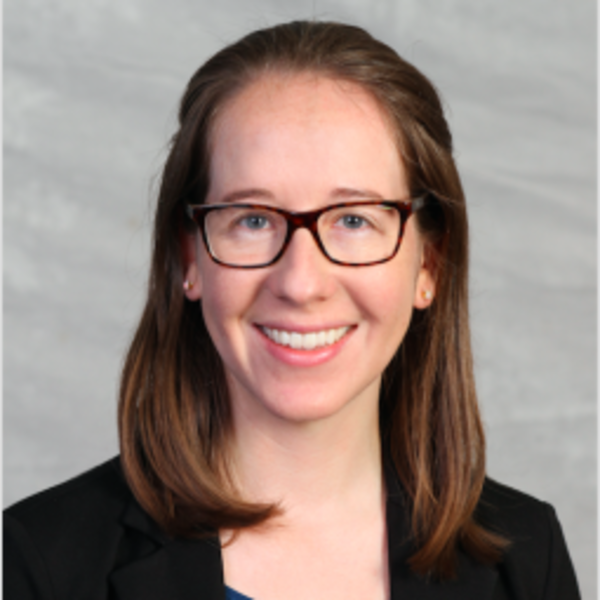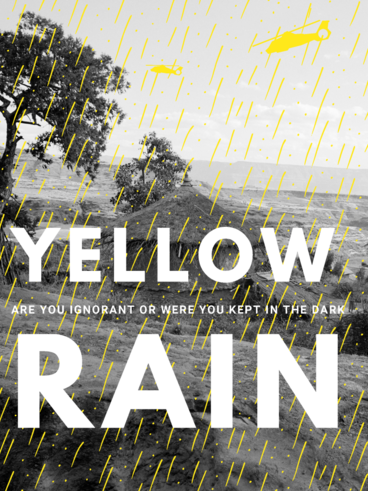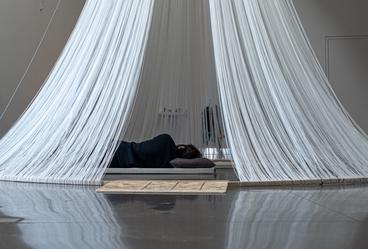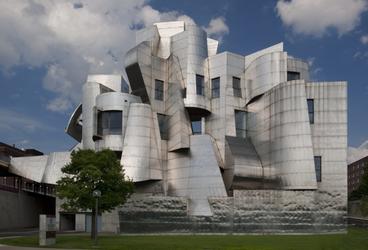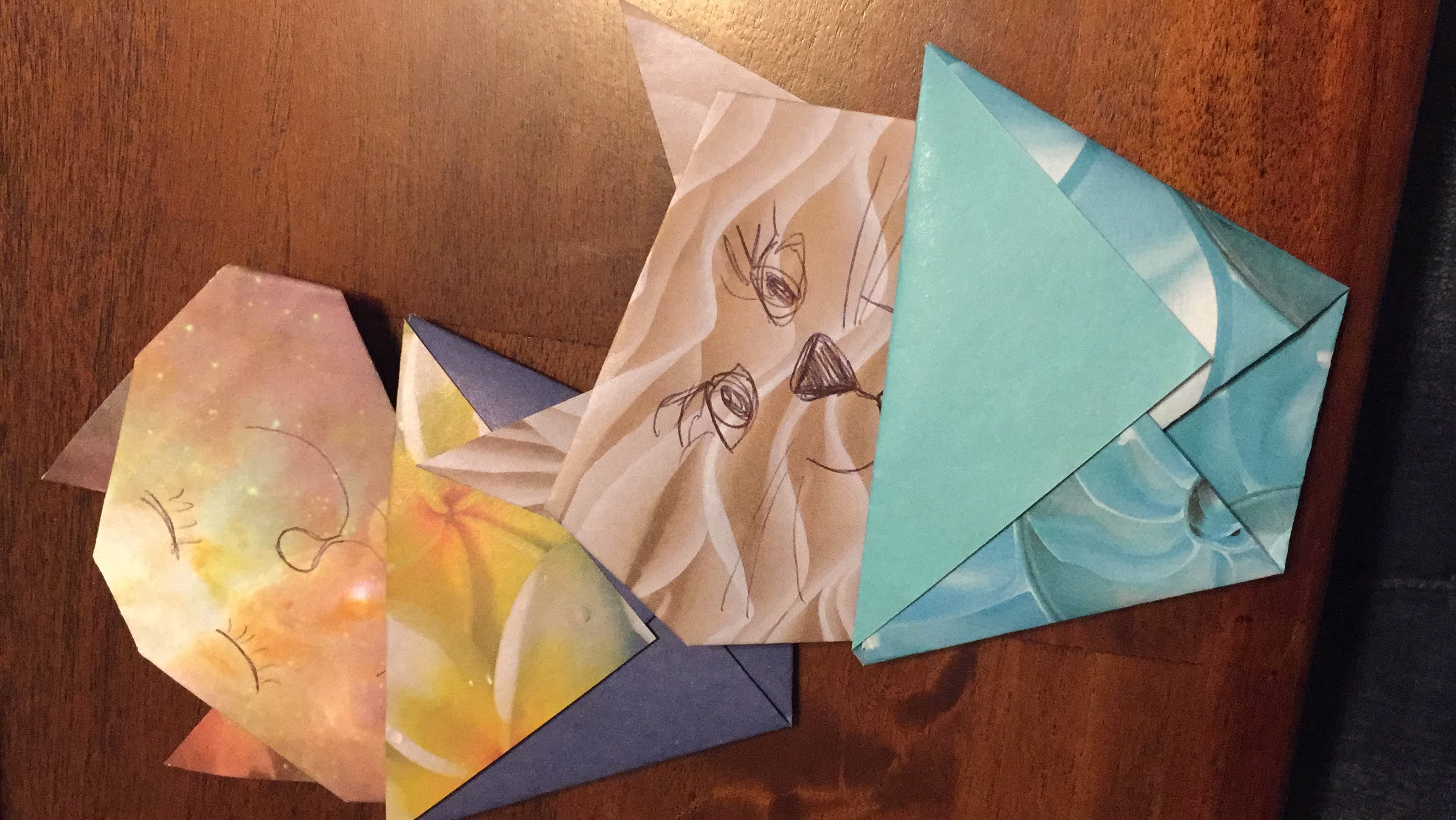
FEATURED ESSAY
“Please give your origami cow a name.” These were the instructions I received one Wednesday afternoon as part of a Creativity course taught by Yuko Taniguchi. I was a medical resident in psychiatry, taking a break from seeing patients in clinic to learn about art therapy. Yuko taught the class for adolescents in a mental health outpatient program. We had spent the last half-hour learning a series of folds that transformed a square piece of paper into a the recognizable head of a cow, or at least some creature with triangular ears. The origami paper was designed with large tropical fruits—and my cow was covered in neon kiwis.
I was stuck. What to name my cow? I couldn’t think of a name. The paper cow stared at me with her boxy pink nose and the giant black eyes I'd drawn on minutes before. Mrs. Cow? Would that do?
I gazed at my origami cow, then flipped her over a few times, as if I could discover a good name for her hidden on the other side, or under the folds of her paper ears. How could this be? I used to pride myself on creative tasks like choosing an unexpected and whimsical name for an origami animal.
It had been years since I’d been asked to be creative in this way. I'd spent the last four years in medical school, devoted to memorizing information. I aimed to pick the correct multiple choice answer on tests or recite the facts I was quizzed on during hospital rounds. I learned detached, clinical language to describe what I saw in clinic or at the hospital. Any deviation from the well-worn path of medical knowledge – even mispronouncing trapezius or saying “bun” instead of B.U.N.” was viewed as mortifying in medical culture. Throughout medical training, to not spit out an expected response—the same response of the students standing next to you and the hundreds of students before and after– is to fail. The most creative task I was charged with in training was during my surgery rotation: to hold various instruments at odd angles while simultaneously staying out of the surgeon’s way and taking up as little space as possible. The effort resulted in something like a modern dance move, frozen in space.
In medical school, I was gifted a short white coat during my first week. It was boxy and made of stiff cotton, only briefly clean before pen stains, lunch spills, and the grime from the far corners of my backpack appeared. Once in uniform, I assumed the role of medical student and was expected to conform to the expectations of a hierarchical medical culture. Part of the costume: know the answers, don’t reveal too much about yourself, and look eager to learn. My supervisors asked a few perfunctory questions at the start of each month-long rotation: what are your goals for this rotation? What specialty are you interested in? Our professional goals became our identities. After day one, we were often just addressed as “the med students” or “med studs” for short. It didn’t take long to feel like I was losing sight of myself. No one knew that I loved Brazilian music, spent Sundays at flea markets, or that I wanted to be the kind of doctor who prescribes poems in addition to medications. I felt swallowed whole by the ill-fitting white coat, my personality stamped out and my worth determined by how quickly I answered medical trivia on rounds.
In my final year of medical school, I saw a flyer for an event at the Weisman Art Museum about the intersection of poetry and medicine. I recruited a friend to join me, and we spent the autumn evening in the museum. The event began with Yuko’s poem, titled Begin with pieces, projected onto a large white wall. We all faced the question posed in the poem: "What makes you, you?" I pondered how to answer this—a difficult question, even if I had not spent years in training feeling my identity chipped away. What makes me, me?
Research suggests that clinical trainees often feel they forfeit personal identity through the process of trying to succeed in medicine. Medical students are exposed to a “hidden curriculum” that teaches how to behave and embody the role of doctor within the medical culture and system (1,2). Medical training often does not facilitate the integration of pre-existing identities. The process of developing a professional identity is complex and, as Wellbery and Chan aptly summarize, “the white coat confers professional identity at the expense of personhood (3).” Through years of medical school and residency training, I learned to adopt a professional persona in the hospital and clinic at the expense of my personality. I had learned to become a doctor, while unbecoming myself.
Through participating in the creative art and writing exercises in the Creativity group, I could shed my clinical identity and reclaim my individuality. After reading Mary Oliver’s poem The Other Kingdoms, we were invited to share our personal kingdoms: our sources of joy and respite. I wrote about learning to play samba music, getting lost in filling the pages of a journal, and the surprisingly meditative practice of making handmade pasta. As a group, we explored the whimsy of words in one another’s writing. We celebrated each individual’s unique experiences and ideas. Soon, I could feel myself emerging out of the mold of a dispensable, replaceable medical student. The more I responded to creative prompts for which there is no textbook answer, the more I felt like myself.
- Monrouxe L V. "Identity, identification and medical education: Why should we care?" Vol. 44, Medical Education. 2010.
- Kaiser R. "Fixing identity by denying uniqueness: An analysis of professional identity in medicine." J Med Humanit. 2002;23(2).
- Wellbery C, Chan M. "White coat, patient gown." Med Humanit. 2014;40(2).
Related exhibition and further reading
This essay is published in conjunction with the exhibition, The World Inside You: Research on Creativity and the Adolescent Brain at the U of M, on view at the Weisman through June 25.
Read more by the author in an article published by STAT, "Penelope, a fictional pig, taught me to talk with my patients about their fractured sleep."
"Counterspaces in Medicine" by Yuko Taniguchi, published on the WAM blog.
"Harnessing Creativity and Discomfort to Make Positive Change in Medicine" by Angie Mejia, on the WAM blog.
Rebecca Grossman-Kahn MD
Rebecca Grossman-Kahn MD is a fourth-year psychiatry resident at the University of Minnesota. She will be working in emergency psychiatry after graduation in 2023. Her professional interests include clinical ethics, narrative medicine, and medical education. Her essays have been published in Bellevue Literary Review, New England Journal of Medicine, and The Examined Life Journal.
